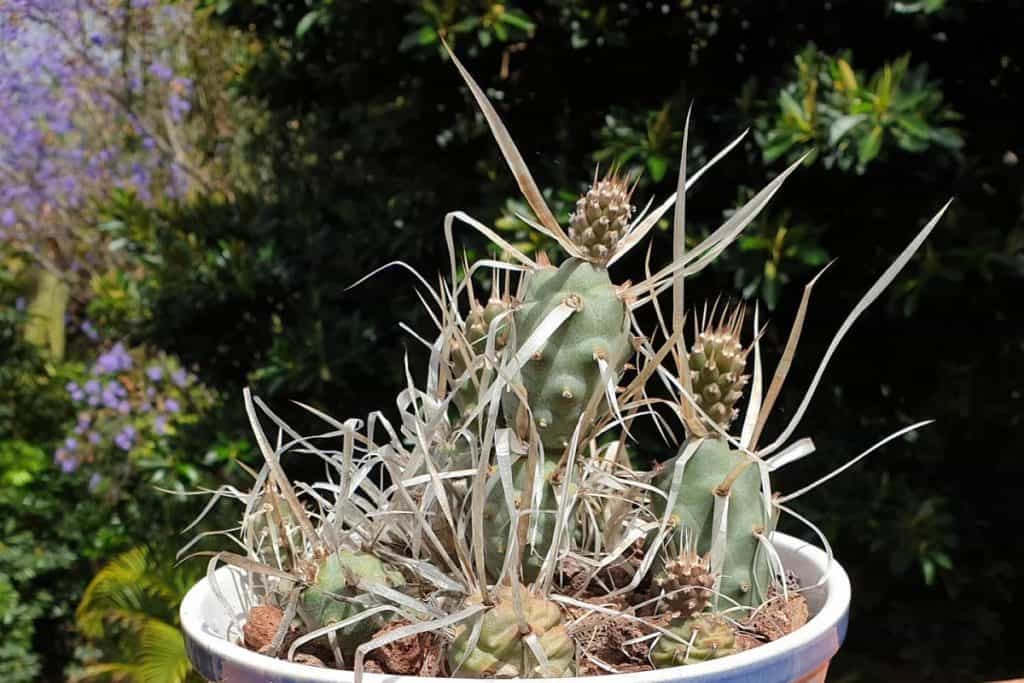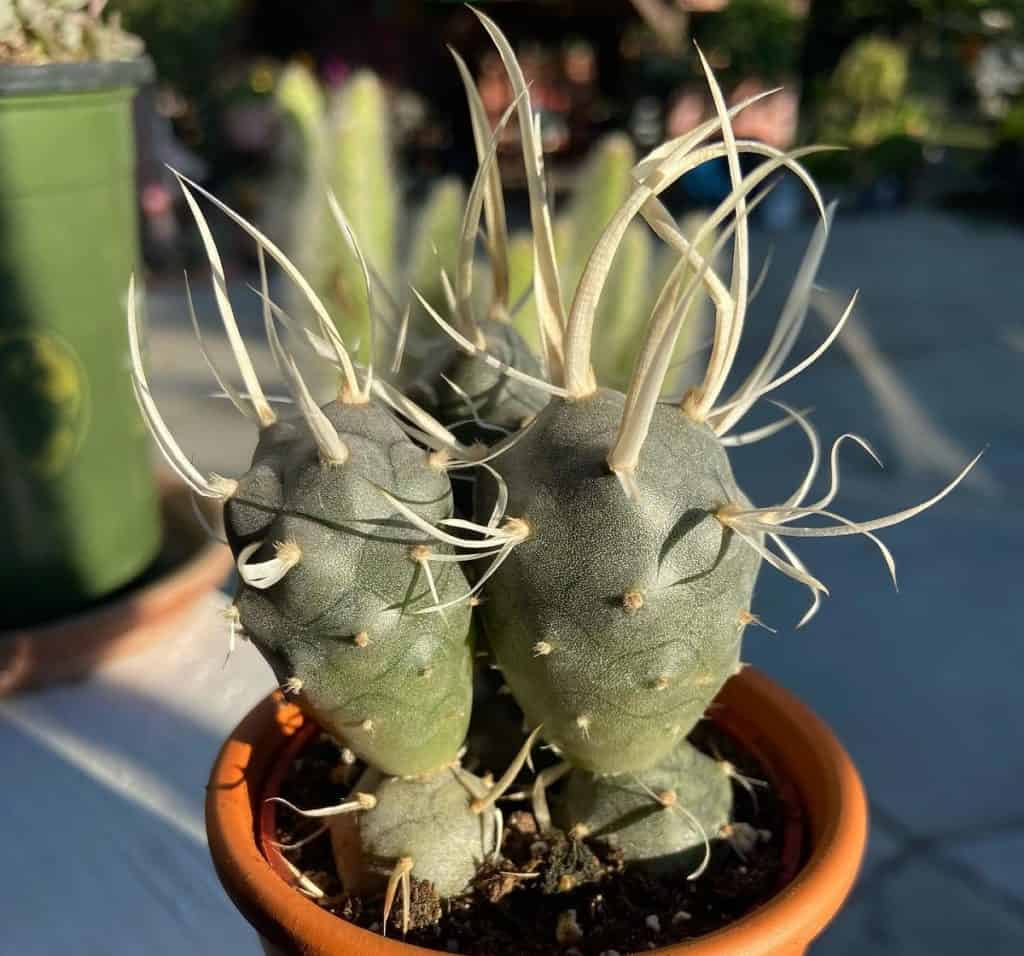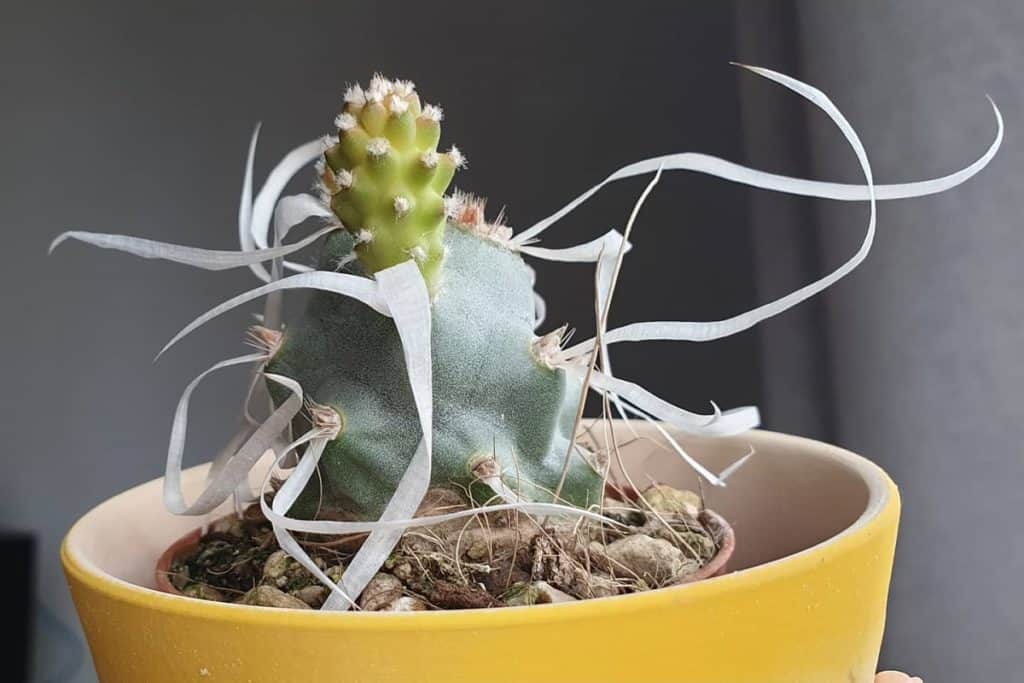Opuntia papyracantha: The Cactus That Sheds Its Thorny Stems
If you’re searching for a cactus with serious personality, look no further than the paper spine cholla cactus (Opuntia papyracantha). This eccentric succulent, native to western Argentina, is famous for something pretty bizarre – it can’t seem to hang onto its own stems and spines! Keep reading to discover the wonderfully weird world of the self-shedding cactus.

Contents
About Opuntia papyracantha
The paper spine cholla grows as a bushy shrub made up of branching stem segments. And here’s where things get interesting – those segments are pretty much freelancers, not too committed to sticking around on the main plant. They’ll often just drop off and go their own way!
As for the plant’s namesake spines, they’re like papery white ribbons rather than sharp needles. And even those can fall away, leaving the stems Nearly bare at times. With its white-ish flowering blooms, this cactus is basically a master of undressing itself seasonally.
Related Post:
195 Opuntia Varieties [With Pictures]
How to Care for Opuntia papyracantha
Light Requirements
Opuntia papyracantha craves as much sunlight as a plant can get. Situate it in the sunniestspot possible, like a south-facing window or an outdoor patio. During intense summer heat, provide some afternoon shade to prevent sunburn. If outdoor lighting isn’t enough, supplement with a grow light placed 6-12 inches from the plant for 12-14 hours per day.
Watering Needs
Like most cactus, this variety is accustomed to arid conditions. Water thoroughly but infrequently – about every 7-10 days in spring through fall. Allow the soil to fully dry between waterings. In winter, water just enough (every 3-4 weeks) to keep the soil from going bone dry. Always use well-draining cactus soil.

About the Soil
This cactus requires a very well-draining potting mix made for cactus and succulents. An ideal blend contains 20% sphagnum peat moss, 60% coarse vermiculite, and 20% sharp sand or grit. Adding a handful of compost can provide minor nutrients. The right soil mix prevents issues like root rot.
Fertilizing
Feed monthly in spring through fall with a balanced cactus fertilizer diluted to 1/4 strength. Or use a slow-release pelletized cactus fertilizer worked into the soil at repotting time. Avoid fertilizing in winter when growth is minimal.

Temperature and Humidity
Opuntia papyracantha thrives in warm temperatures from 65-95°F. Humidity should be on the drier side, under 40%. Provide excellent airflow to discourage rot and fungal diseases.
Pests and Problems
Watch for common cactus pests like mealybugs, spider mites, and fungal diseases in overly damp conditions. Good airflow and judicious winter watering prevent most issues. Prune out any diseased or dead segments promptly.
Pruning
Minimal pruning is required beyond removing any fallen or rotting stems and spent flowers as needed. The natural self-pruning habit of this cactus keeps it tidy!
Potting and Repotting
Use a container with drainage holes and deep enough to allow for 4-5 inches of cactus potting mix. Repot annually in early spring, moving up only 1-2″ pot size. Slip off any loose stem segments and reroot them to propagate.
Opuntia papyracantha Propagation Methods
One of the easiest cacti to propagate, Opuntia papyracantha readily grows new plants from shed stem segments. Here’s how:
- Collect any fallen stems and allow the cut end to callus over for several days before planting
- Fill a well-draining cactus pot with fresh cactus/succulent potting mix
- Stick the calloused stem upright into the potting mix, leaving the top third exposed
- Water sparingly until new growth emerges in 4-6 weeks
You can also try seed propagation, but getting them to sprout can be tricky. Division by removing offsets is another viable technique for this prolific cactus.
No need for complicated tricks with the paper spine cholla! This easy-going cactus, content to cast off its own parts regularly, makes for a delightfully low-maintenance yet unique addition to your succulent garden.
